Two times this week I had the pleasure of joining some great naturalists out in Delhaas Woods. The first time was for the North American Butterfly Association’s annual butterfly census. Six of us started out the morning (my kind of morning–10 AM) in the lawns behind the old Lafayette Elementary School. My companions, Mary Anne, Pat, Pat, Susan, and I spread out over the uncut grass looking for butterflies. A number of eastern tailed blues (Everes comyntas), tiny pale butterflies with a small orange eyespot on the tip of the back wing, flitted about the clover. A good number of skipper, a group of small, drab, look-alike butterflies, drifted from plant to plant whenever we got close. Good thing we had binoculars with us.
I did this butterfly count for years with George Carmichael, the Silver Lake Nature Center’s first Naturalist and one of my mentors. We counted until George’s passing and I retired. Since neither of us were that good with butterfly identification, we took nets and endeavored to capture, study, and release each of the more confusing species. By doing this, we created a visual image so we would recognize that species for that day. On this day, both Pat and Mary Anne could recognize more of the skippers than I could—a good thing.
As one still struggling with my identification skills and not having a net, I did something different. I brought a camera with a telephoto lens and an autofocus setting. A butterfly would land and I would point and shoot; point and shoot; point and shoot. No longer did I need to capture the insect, it was preserved digitally-no stress no muss, no immediate identification.
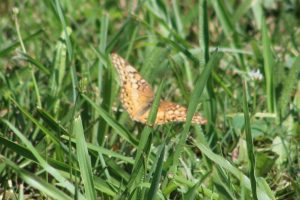
Pat called out, “Here is something different!” I point and shoot and move on as the butterfly did not hang around long. Later in the evening, I downloaded all the pictures and we were able to confirm Pat had a variegated fritillary (Euptoieta claudia), a butterfly I do not think I ever saw on any earlier counts.
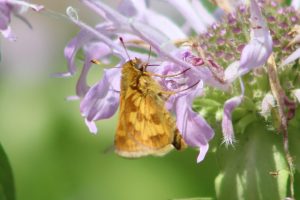
Reviewing the pictures enabled me to really study the field marks of the Peck’s Skipper, a bright orange and brown sprite that I should be able to always recognize now.
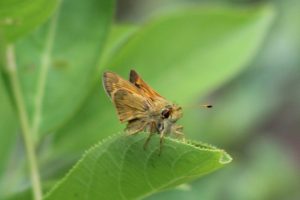
It also helped me sort out
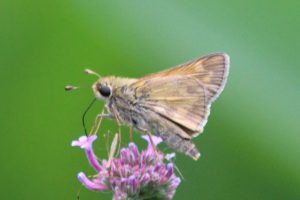
the dimorphic sachem. The female has nice clear marking, but the male looks like a little blob of dirty orange.
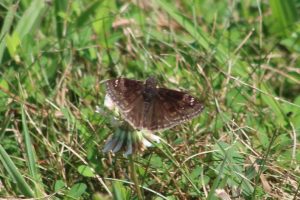
I studied my picture of the wild indigo duskywing (Erynnis baptisiae), a common species in Delhaas every year. One of the pictures looked a little different, so I went to the books to do some research. I decided it might be a different species and I guessed Juvenal’s Duskywing (Erynnis juvenalis), a butterfly named after a person not an age. But, this species is usually present earlier in the season. I sent the photo to our trusty leader, Mary Anne, and she concurred it something different, but was not sure what. The image then went to someone better than both of us who confirmed a new species for us, a Horace’s duskywing (Erynnis hortatius), a  doppelganger of the wild indigo duskywing. I wonder how many I had misidentified all these years with George.
doppelganger of the wild indigo duskywing. I wonder how many I had misidentified all these years with George.
By the day’s end, we tallied up 21 species and 439 individuals. The day was a great learning experience and humbling.
The next day, I joined one of oldest friends, someone I met when I came to Bucks County in October 1974, Rick Mellon, Mellon Biological Services, and another one of my mentors. We were joined by Rick’s son and business partner and three botanists. Unlike the butterfly count where we walked the trails and scanned for flying objects, this day required us to get off the trails and forage around the various plants. We drifted from species to species, the botanists sharing identification with Rick teaching the others simple ways to identify challenging plants when he knew a shortcut. Once, he pointed out that one species of goldenrod, a group of plants devilishly ticklish to sort out, could be told from its most similar cousin by the way it leaned. Looking around, sure enough, all the plants of that species did not stand straight like the others, but leaned to the side. I remember years ago Rick telling me that a botanist would describe the difference between a white horse and a black horse because the white one stood 15 hand high and the black one 16. No book would describe a plant as leaning.
In one location, I notice Rick checking very carefully amongst the short vegetation, obviously looking for a specific plant. Once I knew he was looking for a rare violet, I moved off to another nearby area where the goldenrod plants stood waist high. Smashing down a path through the goldenrod, a tiny leaf looking like fingers caught my attention. I stopped and called Rick over. Here was this rare plant living in the dark shade of the goldenrod as opposed to the sunnier short vegetation. Everyone gathered around marveling at the plant and how I had discovered it. As they moved on, I pointed out another one they had exposed by stepping on the goldenrod.
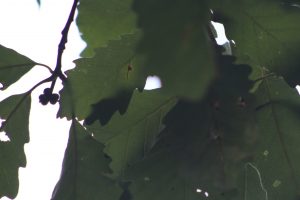
For some of the botanists, the highlight was the re-discovery of a swamp chestnut oak (Quercus michauxii), a plant that looks like the more common swamp white oak (Quercus bicolor). A brisk discussion of the difference ensued. It was mentioned that this plant is the only plant species that is found in Pennsylvania, but not in the Pennsylvania botanist’s bible, The Plants of Pennsylvania by Ann Rhoades and Timothy Block. Here was a huge tree growing in the park I managed for years. I had never noticed it before or had misidentified it.
This was another great day and another great learning opportunity. Each day can be a day of discover if one just looks. It helps to hang around people who know more than you do, too!
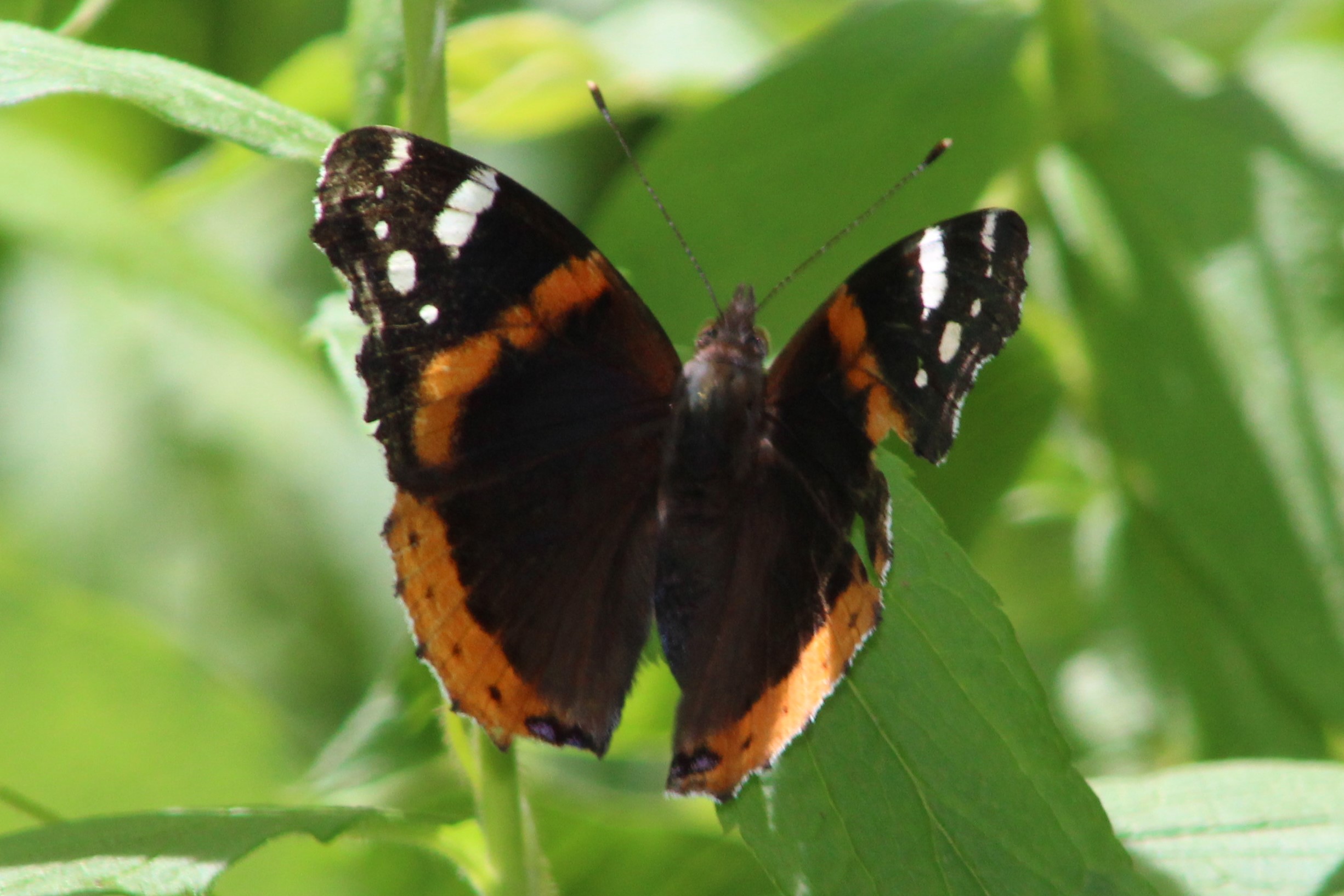
Comments
3 responses to “Never Stop Learning”
Do you now have a life butterfly list?
Actually, I do not. Up until recently, I only kept a list of life birds and a list of the state or countries I have visited. Recently, I added counties in states I have visited. Maybe I should start a butterfly, or cicada, or insect list. Sounds like too much work as I would need to start from scratch.
I have found you thanks to John, (the center volunteer). I thoroughly enjoyed this July remembrance. I am savoring your beautiful photos. Thank you for this gift. I will research past musings.
Your fan and student,
Patricia Merkel